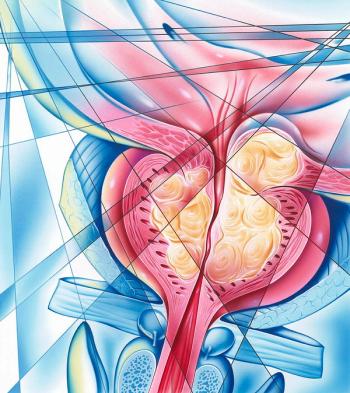
- ONCOLOGY Vol 27 No 4
- Volume 27
- Issue 4
Value Judgments in Diagnostic Imaging for Prostate Cancer: A Paradox in Healthcare Reform
Only the possibility of increasing survival with better tumor localization and staging is probable with multiparametric MRI-and improved survival with MR imaging in prostate cancer has not been shown in a clinical trial or meta-analysis to date.
As federal agencies work to reduce the cost of healthcare delivery in this country, the high cost of cancer therapy-which is delivered primarily to Medicare recipients-is being especially targeted. Beyond safety and efficacy, the value of medical procedures will increasingly need to be justified to payors, who for more than 60% of Americans is now the federal government.
Nora Janjan, MD
One of six chief obstacles to affordable, high-quality healthcare that have been identified by the Institute of Medicine (IOM) is the “overuse and misuse of medical resources and care that do not align with clinical practice guidelines.” The IOM has indicated that many screening interventions, especially imaging technologies, are often overused or adopted before clinical benefits have been proven.[1]
In the same report that identified obstacles to affordable high-quality care, the IOM suggested four criteria for assessing value in medical care:
• Increased survival.
• Reduced side effects.
• Improved quality of life.
• Reduced costs.
Consistent with the goals of the Patient Protection and Affordable Care Act (PPACA), the IOM recommended that any treatment or procedure, in order to be deemed “of value,” should demonstrate at least one of these four benefits. The 2012 US Preventive Services Task Force (USPSTF) recommendation against prostate-specific antigen screening applied the IOM approach to assessing value in healthcare. The potential harms from screening evaluations and from treatment of indolent disease were thought by the USPSTF to far outweigh any potential benefit from earlier detection, and watchful waiting was determined to be an acceptable alternative to radical prostatectomy in men 65 years of age and older.[2,3]
Previously, the strategy in cancer screening was to identify patients with cancer and determine the most appropriate and effective treatment for each. Now the emphasis is on avoiding the potential harms associated with diagnostic procedures, such as biopsies, and treatment for asymptomatic disease, especially in patients with multiple comorbidities.
In this issue of ONCOLOGY, Rajan Gupta and colleagues
In the future, in addition to safety and efficacy, diagnostic and therapeutic procedures, particularly imaging modalities, will need to address the issue of value squarely. While the Independent Payment Advisory Board, created by the PPACA, cannot ration care or make direct cuts in services, procedures that fail to meet the criteria for a valuable medical service can be subject to indirect cuts. Procedures that do not fulfill the criteria for value will not be included in guidelines and will not be authorized for coverage by insurance companies or newly created Accountable Care Organizations.
The paradigm for cancer care in the US has been dramatically changed by the PPACA. Hopefully, this paradigm shift will not compromise scientific advancement or patient outcomes. It all comes down to who makes the value judgment.
References:
REFERENCES
1. Institute of Medicine. Delivering affordable cancer care in the 21st Century: workshop summary. Washington, DC: The National Academies Press; 2013.
2. Bill-Axelson A, Holmberg L, Ruutu M, et al; for the SPCG-4 Investigators. Radical prostatectomy versus watchful waiting in early prostate cancer. N Engl J Med. 2011;364:1708-17.
3. Ollendorf DA, Hayes J, McMahon P, et al. Management options for low-risk prostate cancer: a report on comparative effectiveness and value. Boston: Institute for Clinical and Economic Review, December 2009. Available at:
Articles in this issue
over 12 years ago
Oligodendrogliomas: Questions Answered, Answers Questionedover 12 years ago
Accelerated Partial-Breast Irradiation: Does the Evidence Stack Up?over 12 years ago
The State of Prostate MRI in 2013: Into the Breachover 12 years ago
Multiparametric MRI: Standardizations Neededover 12 years ago
Management of Recurrent EOC: The State of the ArtNewsletter
Stay up to date on recent advances in the multidisciplinary approach to cancer.


















































































